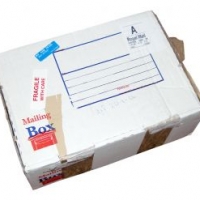New Software Will Save UPS Millions and Deliver Your Packages Quicker

Nearly every company’s goal is to deliver a product efficiently—making the best use of time and money available and reducing waste.
Thanks to experienced drivers, UPS was already plotting streamlined routes and dropping off packages on time. But the company wanted to get better, so it invested heavily in a software project that will help determine the best course from point A to point B, saving time, money, and fuel.
The newly launched project is called ORION: On-Road Integrated Optimization and Navigation. By using connected car-like telematics and analyzing data, the software takes into account package information, user preferences, and routes. Juan Perez, vice president of information services, said, “We’ve challenged our drivers to beat ORION, and we’ve found that the technology happens to be much better.”
From Forbes:
Every parcel that UPS delivers contains extractable data on time of shipment and how it matched delivery commitments. But ORION also scans map data and historical GPS tracking of similar routes to come up with a solution.
The software has 250 million address data points to access and runs on an algorithm Perez says is the equivalent of 1,000 pages of code. Each individual route has an average of 200,000 possible ways to go.
Optimized driving directions are just one consideration. ORION also makes decisions based on scheduled delivery times, the type of package being picked up or dropped off, and whether a package must be signed for.
In later versions, ORION will even be able to use real-time data, meaning it could determine bad weather, traffic, or other variables that could affect a route. The software depends on heuristics, so suggestions should get better over time.
Jack Levis, UPS’s director of process management, manages a team of mathematicians who build the algorithms used to determine ORION’s routes. So far, the project seems to be a success: Levis said it’s saved UPS something like 35 million miles a year. During the testing of the program from 2010 to 2012, UPS saved three million gallons of fuel, and it’s expected to save an additional 1.5 million gallons this year—making this experiment not only time-saving and cost-efficient for the company but better for the environment, too.
Still, don’t expect to see robot-controlled UPS trucks flinging packages onto your porch any time soon. Levis said he understands that the knowledge veteran drivers have accumulated over the years is important. Driver input will continue to be factored in, with the goal being for the software to improve their job function. The best system, he says, is one that relies on both brainpower and algorithmic intelligence: “How do we come up with ways that are better than what humans would have come up with on their own?”

